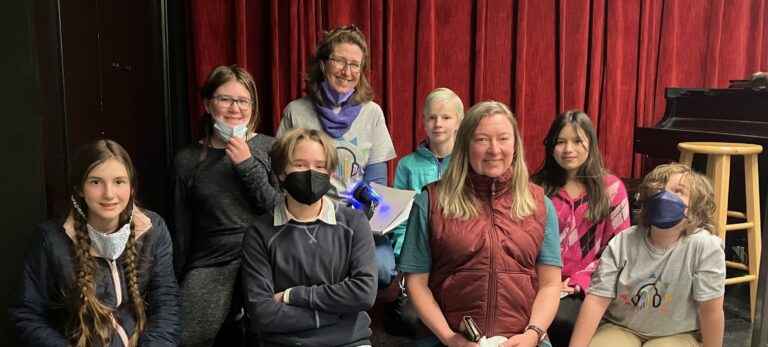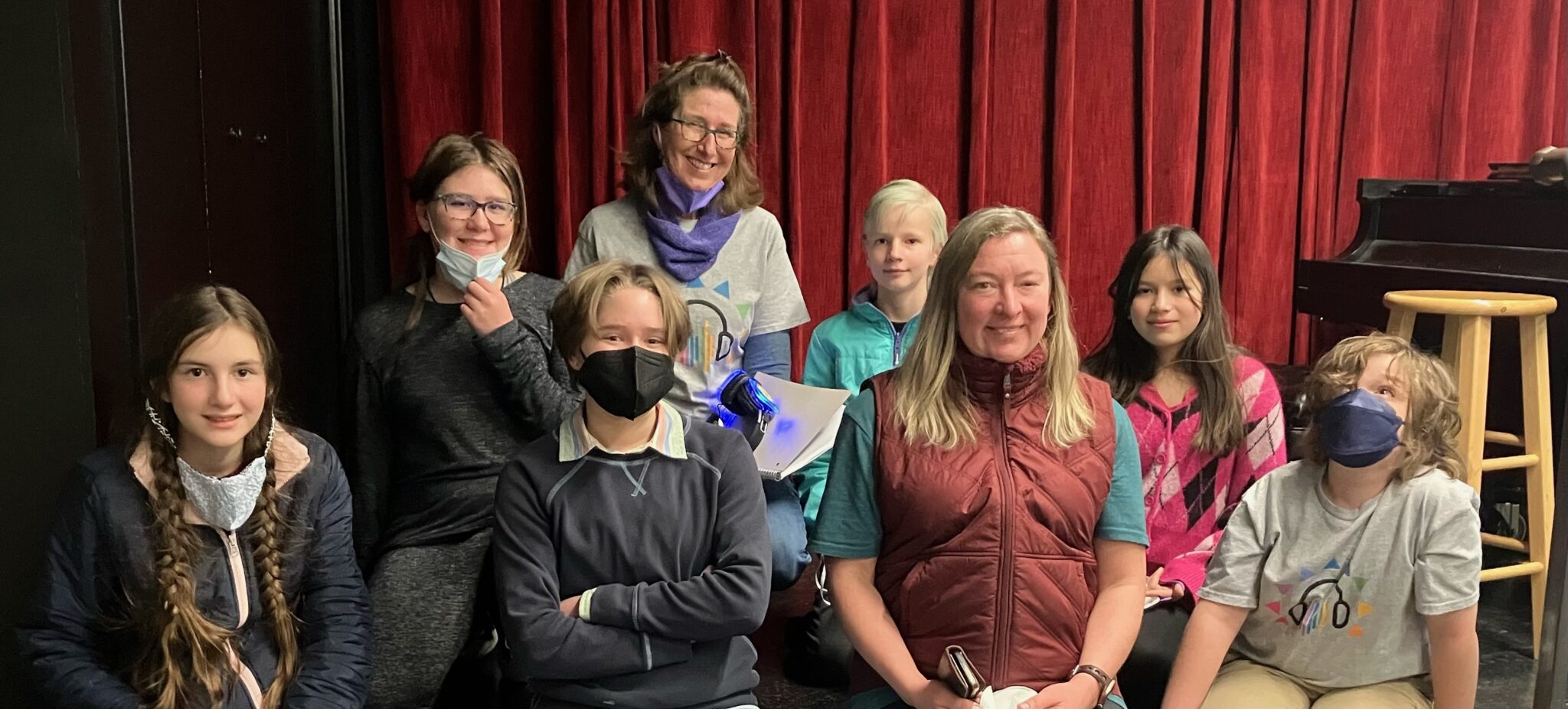I’ve spoken about the interconnections between trees, fungi, and wildlife to many audiences, from explaining conservation programs to Navy officers to defending scientific research in front of fellow scientists and land managers. Yet, time after time, talking with volunteers and young adults is always my favorite. I recently had the opportunity to record an episode of The Children’s Hour, a New Mexico based non-profit dedicated to producing high quality Kids Public Radio, about old growth forests with a panel of bright young adults. Arriving at the studio in Albuquerque and looking at the young, eager faces, I couldn’t wait to see where the conversation would take us. No matter who is in the audience, it’s never an easy task to explain how the many disciplines of science come together to help us understand why mature and old growth forests are so special.
There are so many reasons that ancient forests are special to us and our more than human kin. Mature and old growth forests harbor more and different biodiversity and wildlife than young stands. Old trees are also more resilient to fire, and they can reach deeper into the soil layers at night to move water to upper soil layers for all plants to use during the day. Mature and old growth trees are critical to climate resilience due to their unparalleled capacity to sequester and store carbon at much higher volumes than seedlings and younger trees. In addition, intricate forest structure of mature and old growth forest create microclimates that are buffered from the most extreme temperatures, drying winds and solar radiation – providing refuges for wildlife as temperatures and hydrologic extremes become more common. And of course, then there are the cool and amazing facts about how plants sense light and sound, and communicate. The interactions between all kinds of critters in the forest always amaze me, but my favorite are the fungi that form special relationships with plants, known as mycorrhizae (literally “fungus-root”).
My conversation with The Children’s Hour dives into all this and more. To listen, tune into the Children’s Hour podcast on Forests. Find out when it’s airing on your local public radio station here. And check out the accompanying learn-along guide that goes with the episode.
At Guardians, with your help, we are working to protect these special places for future generations. Sadly, less than 20% of the world’s forests remain intact. One-third of the remaining mature and old growth forests left in the United States are on Forest Service land. Three quarters of those remain unprotected from extractive activities. These include >165,000 acres of the land rated most important to our drinking water supplies.
In recognition of the many roles mature and old growth forests play, especially as a nature-based solution to climate change, President Biden issued Executive Order 14072 on Earth Day 2022. This order directs federal agencies to define and inventory mature and old growth forests, while also identifying threats to their survival. The first national government inventory of mature and old growth forests was provided a year later, in April 2023. However, protections for these rare, magical and important forests remain elusive. So, we continue to push our elected leaders and land management agencies to prioritize real and lasting protections for these special places.
Find out more about what Guardians is doing with your help to support mature and old growth forests on our web page focusing on these forests. Interested in fungi and mycorrhizae? Check out our new forest fungi program!

Lisa Markovchick (with some of the panel from the Children’s Hour recording)
